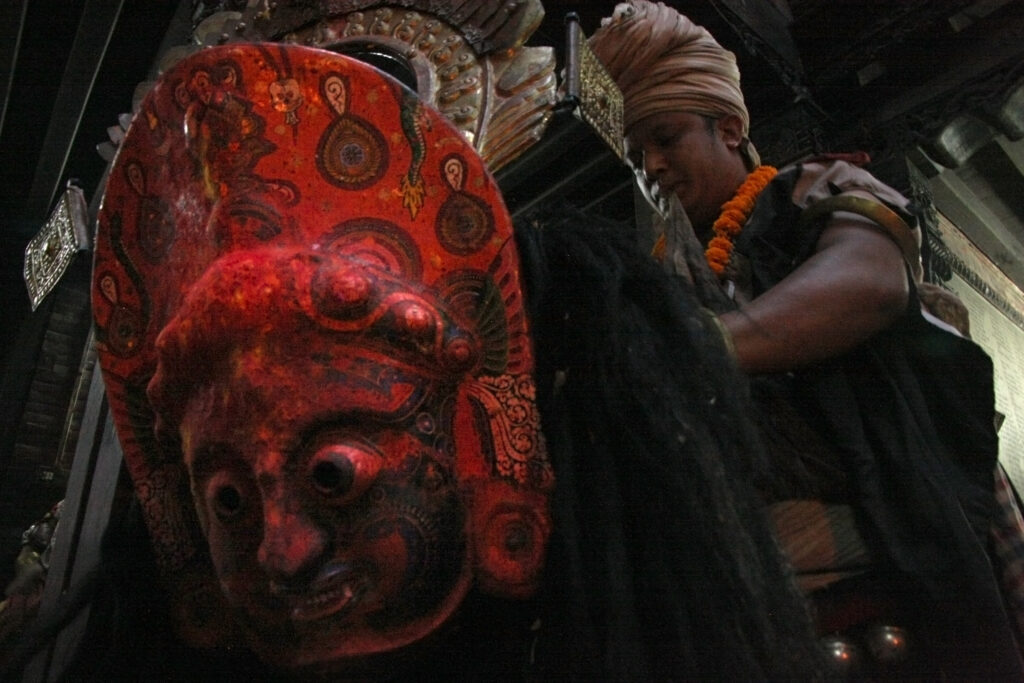
Photo by Shan Du
Eyes on Music: Ethnomusicological Film Festival
Seminar and Premiere of the 2022 Carpitella Scholarship Film
The seminar and film screenings are part of a broader initiative called Eyes on Music: audiovisual ethnomusicology projects, organised by the Intercultural Institute for Comparative Music Studies of the Giorgio Cini Foundation, Venice, since 2018, with the aim of promoting training and production support activities in the field of audiovisual and multimedia ethnomusicology.
This year’s edition includes a seminar in the morning addressed to Ca’ Foscari University students on the topic “Filming ritual”, with the participation of anthropologists, ethnomusicologists and filmmakers, followed – in the afternoon – by the public screening of three films, including the premiere of the 2022 Carpitella Scholarship’s film Devagan.
Programme
Seminar
Filming ritual
10:30-13:00
With Ca’ Foscari University students
Participants: Giovanni Giuriati, IISMC Fondazione Giorgio Cini; Valentina Bonifacio, Università Ca’ Foscari Venezia; Giovanni De Zorzi, Università Ca’ Foscari Venezia; Shan Du (Carpitella Scholarship 2022), Università degli Studi di Milano; Marco Lutzu, Università degli Studi di Cagliari; Jasmine Pisapia, McGill University, Montreal e Università Ca’ Foscari Venezia; Nicola Scaldaferri, Università degli Studi di Milano; Simone Tarsitani, Durham University.
Screenings
15:00-18:00
Free admission
Gũlā: Music of a Sacred Time, Remigiusz Sowa (director), Anna Sowa (producer), and Richard Widdess (musicologist), 2022, 14’
Gũlā: Music of a Sacred Time arose from a collaboration between Chouette Films (http://chouettefilms.co.uk), run by two filmmakers Remi and Anna Sowa, and the ethnomusicologist Richard Widdess. The short film features two different Newar musical traditions in the ancient royal city of Bakhtapur in Nepal: dāphā devotional singing and a style of processional music performed during the Buddhist festival of Pancadān. Shot in a dramatic style that evokes the atmosphere and religious potency of the old city through vivid colours, contrasting illumination and slow-motion effects, the film combines footage of music performances with comments made by two interviewees: a 70-year-old man called Panchalal, who is a leading exponent of dāphā drumming, and a 19-year-old woman called Vishakha, who performs in the festival procession. The focus on these two musicians’ views about the meanings and sustainability of their traditions reflects the filmmakers’ stated aims to encourage community participation and to activate the potential of film to validate marginalised communities and their cultural heritage.
Dance for the dead of Bhaktapur, Gert-Matthias Wegner, 1989, 20’
This documentary was recorded and edited in 1989 in collaboration with World View Nepal, the first Nepalese video team using UMATIC Highband, a clumsy technology in comparison with what we have today. The film is based on my fieldwork in Bhaktapur that started in 1983. I had already completed several local drumming apprenticeships, learnt the local language Newari and participated in town rituals as a drummer. The film focuses on the annual cow festival Sāpāru (Nepali: gāī jātrā). Families who lost a member prepare a cow effigy and carry it along the processional route whilst family and friends dance the typical stick dance in front of the cow leading the departed soul to heaven. All this happens not in a spirit of mourning but joyful accomplishment and erotic undertones highlighting sex as a remedy against death. During the week after the cow processions, people perform various masked dances, among them Bhaila pyākhã of the potters of Bhaktapur who are also filmed during their daily work.
Devagan, Shan Du, 2023, 75’
premiere with the filmmaker
The devagan in the Newar language indicates a group of people who embody deities. The film describes the ritual performances of the Nava Durgā, a Hindu tradition of the Newar people of Bhaktapur (Nepal). Since 1512, a group of men from the sub-caste Banmālā have been embodying the nine (nava) manifestations of the goddess Durgā. The rituals take place every year, in different areas of Kathmandu Valley, over a period of about nine months, which corresponds to the life cycle of the Nava Durgā: they are (re)born during the Dasain festival, in October, and die on the day of Bhagasti, in June of the following year.
The main characters in the film are three devagans of different generations, belonging to the same family. The grandfather, Indra Bahadur Banmālā, is the leader of the community in control of the rituals; he tells the origin myth of the Nava Durgā, which is then actualised through the performances of his son-in-law, Narayan Prasad Banmālā, and grandson, Laxmi Prasad Banmālā, two devagans in full activity today. From the stories of the three devagans and from the images, subjects such as the current status of Nava Durgā performance, the transmission of tradition and the challenges faced by the devagans of the new generation emerge.
In addition to the ritual, part of the family’s daily life is also portrayed in the film, through images filmed during fieldwork (2017-2023).
The event is organised in collaboration with Ca’ Foscari University Venice and CFZ – Cultural Flow Zone.
